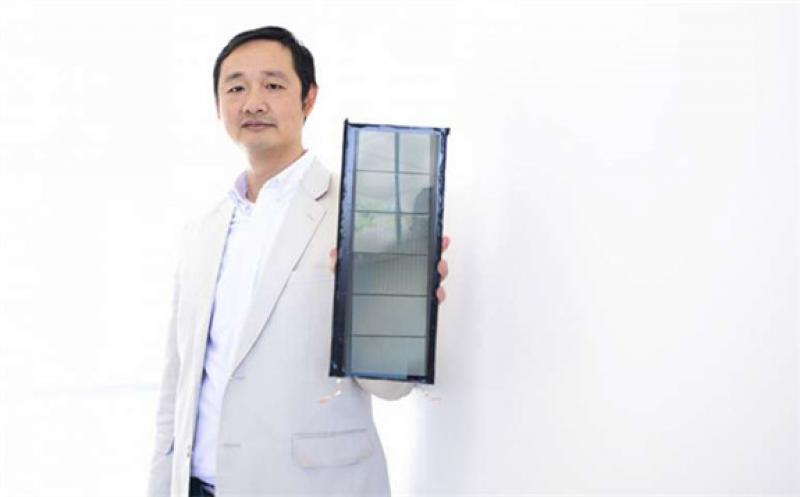
That's when French inventor and renewable energy pioneer Augustin Mouchot used his diverse expertise in mathematics and physical sciences—along with his keen interest in the sun—to invent the earliest solar-powered engine.
Advances in solar energy have been vast since Mouchot first demonstrated his invention at the World Expedition in Paris in 1878. Fast-forward to today, and one of the most exciting developments is taking place at the University of North Carolina at Chapel Hill, where Jinsong Huang and his research group are tapping into the spirit of Mouchot's cross-disciplinary research approach to develop their own innovation—one that promises to usher in a new era in affordable renewable energy.
Huang, a professor in the applied physical sciences department, leads a research team that includes experts from multiple fields to pioneer a novel method for stabilizing perovskite solar cells.
Perovskite solar cells have become increasingly popular subjects of renewable energy research as they demonstrate high solar-to-electricity conversion efficiencies at a low production cost. But their stability when exposed to moisture and oxygen remains a critical hurdle to overcome before the cells can truly become market-ready. The Huang Group is addressing this challenge with a new method that would enhance the resistance of the perovskite solar cells under ambient conditions.
"Solar energy is abundant. You only need to have a small part of sunlight to create electricity," Huang said. "Our new method of harvesting solar energy is cheaper than the popular method. We want to make energy using the sun, converting it to clean energy that is affordable. We are trying to provide electricity using clean energy but without increasing your bill."
In its work, the Huang Group collaborates with other departments across campus, bringing together expertise from areas like chemistry, engineering and materials science.
"We are working with people in multidisciplinary areas and in different fields. Our goal is to reduce the cost of solar energy, and we need to consider how affordable the solution can be," Huang said. "My group is really diverse. We have top-notch scientists with backgrounds in chemistry, physics, engineering and materials science. Solving problems is in our blood. We have to work with people with different backgrounds, and we benefit a lot from collaboration with other faculty."
To further the work, Huang has benefitted from resources across the University, including the Office of Technology Commercialization's patents, copyrights and trademarks team, which helped Huang with the intellectual property process.
And Huang's innovative research is getting noticed for its potential, securing grants and funding as he continues to move the research forward.
"We were lucky to receive grants from the Department of Energy and the National Science Foundation and also from the Department of Defense. That's been great and really promising," he said. "The future is moving the research out of the lab to market. Industry and the University should work closely to move the technology to market."
Huang's work in solar energy creates the potential for perovskite solar cells to be commercially produced for use in clean energy and other applications. It also has the potential to benefit populations across the globe.
"The way that you think of how to power up your house, power up your car, almost everything—it changes the way you think about how to get energy," he said. "Once you have the knowledge, you can make life easier. With a solar panel, you could go anywhere and never worry about power for your computer, your cell phone or for your car."
Huang will be part of UNC-Chapel Hill's Institute for Convergent Science, which is being designed to bring together researchers, students and scholars from many scientific disciplines to discover new breakthroughs that can only be seen through a melding of viewpoints. Convergent science is a problem-centered approach to research that draws together innovators from a wide span of disciplines to address real-world issues. The College of Arts & Sciences is partnering with Innovate Carolina—the campus-wide initiative for innovation and entrepreneurship—to launch a pilot program for the Institute for Convergent Science within the existing Genome Sciences Building in 2020.
As Huang continues to innovate in solar energy, he encourages other faculty to think about the value of working in multi-disciplinary ways, keeping their minds—and ears—open to valuable feedback. In fact, as he pointed out, some of the most important insights that faculty inventors can gain come from those outside the University who will ultimately use the inventions that faculty create.
"I am still learning," Huang said, "but definitely talk to customers who want to use your product. Listen to potential customers."







